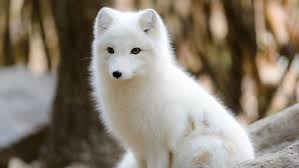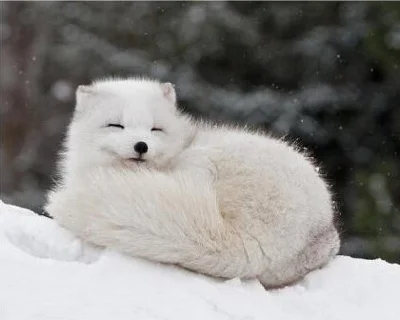Variety Overview
The Arctic fox (scientific name: Alopex lagopus) inhabits the Arctic region. It measures between 50-60 cm in body length and has a tail length of 20-25 cm, weighing between 2.5-4 kg. This species features a narrow face, pointed snout, rounded ears, and a fluffy tail with a white tip. During winter, its fur turns completely white except for the black tip of its nose; in summer, its coat changes to a gray-black color with a lighter belly. The Arctic fox boasts dense underfur and fewer guard hairs, enabling it to survive in temperatures as low as -50°C on icy plains. Additionally, it has particularly thick fur on the soles of its feet. These foxes can be found either solitary or in groups.
The range of the Arctic fox spans across the entire Arctic region including Russia, Canada, Alaska, Greenland’s outskirts and Svalbard Islands’ fringes along with subarctic and alpine areas like Iceland and mainland Scandinavia.
Primarily feeding on lemmings, their diet also comprises fish, birds and their eggs, shellfish, Arctic hares, and berries. As prized fur-bearing animals that have been domestically bred into varieties such as blue foxes or white foxes; other mutant breeds include shadow foxes, Arctic pearl foxes, Arctic sapphire foxes, Arctic platinum foxes alongside pure white variants—all collectively termed colored Arctic foxes.
Design Characteristics
The Arctic fox measures between 46 to 68 centimeters in body length, with a tail length of 28 to 31 centimeters and a shoulder height ranging from 25 to 30 centimeters. It weighs between 1.4 to 9 kilograms. This species is relatively small and plump, with males being slightly larger than females. The Arctic fox features a narrow forehead, a very pointed muzzle, short round ears, hair growth behind the cheeks, short legs, and densely furred soles that are well-suited for walking on ice and snow. Its fluffy tail ends in a white tip. Overall, it is slightly smaller than the red fox (Vulpes vulpes).
The Arctic fox’s fur is long, soft, and thick enough to endure extreme cold climates. During winter, its coat turns completely snow-white except for the black tips on its nose and tail. As seasons change from spring to summer, its fur transitions to a bluish-gray color; in summer it becomes gray-black with a lighter underside. The dense underfur combined with fewer guard hairs provides excellent insulation. Its long tail remains particularly fluffy with a white tip.
Due to its feet resembling those of a hare, the scientific name of the Arctic fox translates to “fox with hare’s feet.”

Living Habits
Food
The diet of the Arctic fox consists of lemmings, fish, birds, bird eggs, berries, and Arctic hares. Occasionally, they also roam along the coast to catch shellfish; however, their primary food source is lemmings. When an Arctic fox encounters a lemming, it jumps precisely and pounces fiercely to pin it down and consume it. Interestingly enough, when an Arctic fox detects the scent of a lemming in its nest or hears its squeaks, it quickly digs into the snow-covered nest. After digging sufficiently deep, it leaps high and uses its legs to collapse the snowy nest, capturing all the lemmings inside and eating them one by one. During times of extreme hunger, Arctic foxes may even attack each other.
Migration
The Arctic fox is known for its impressive long-distance migration capabilities and excellent navigation skills. Over a span of five and a half months, an Arctic fox can cover a distance of 4600 kilometers. On average, it travels 90 kilometers per day and can keep moving for several consecutive days. Remarkably, it can migrate from the Pacific coast to the Atlantic coast within just a few months, covering a distance comparable to the width of Canada. These foxes are adept at navigating across hundreds of kilometers. During winter, they leave their dens and migrate up to 600 kilometers away, returning home by the following summer.
Ethnic Groups
In a group of foxes, there is a strict hierarchy among the females, with one female dominating and controlling the others. Members of the same group share a common territory which rarely overlaps with neighboring groups’ territories, indicating that foxes have a strong sense of territoriality. The population size of Arctic foxes fluctuates in response to changes in lemming populations. Typically, when lemming numbers drop significantly due to mass die-offs, Arctic fox numbers peak. During these periods of scarcity, Arctic foxes tend to migrate long distances; this is also when they inexplicably suffer from “dancing sickness,” a disease caused by a virus that invades their nervous system. Infected Arctic foxes become unusually excited and agitated, losing control and running around frantically; they may even attack passing dogs and wolves. Most infected individuals die during their first winter, resulting in up to two carcasses per square kilometer. Local hunters often harvest pelts from these dead foxes.
